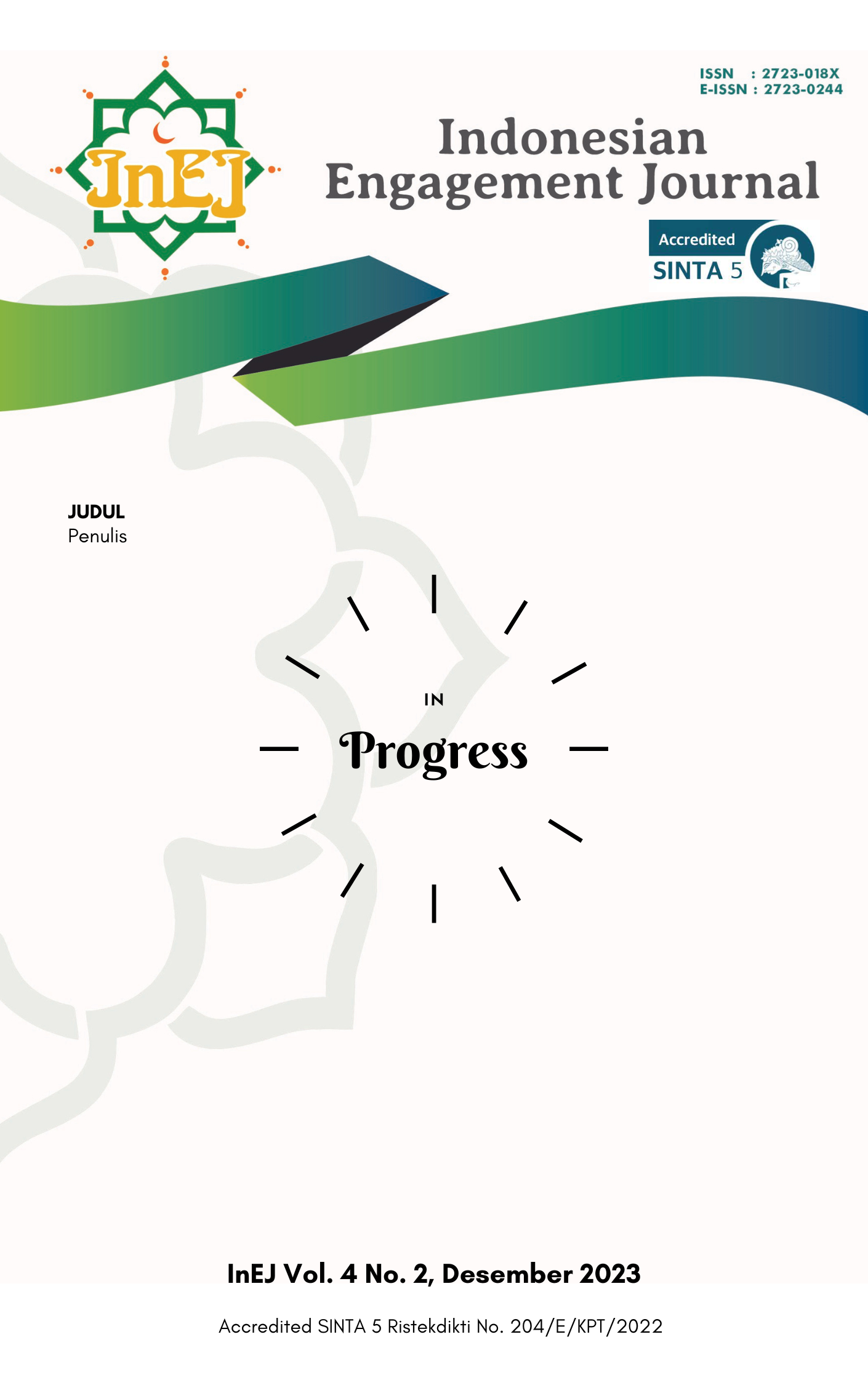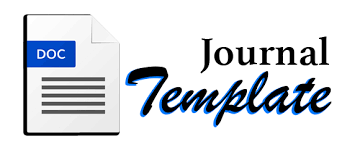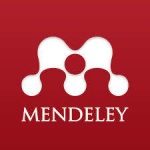PENINGKATAN PENGETAHUAN MASYARAKAT AKAN BAHAYA STUNTING MELALUI KEBERLANJUTAN MONITORING MENUJU GENERASI EMAS 2045 DI DESA GADINGKEMBAR KABUPATEN MALANG
DOI:
https://doi.org/10.21154/inej.v4i2.7522Keywords:
Monitoring, Pengetahuan, StuntingAbstract
Anak adalah sebagai aset masa depan yang akan menjadi generasi penerus bangsa yang memiliki keterbatasan dalam memahami dan melindungi diri dari berbagai pengaruh sistem. Asupan zat gizi pada anak sangat berpengaruh terhadap tumbuh kembangannnya. Status gizi dan kesehatan ibu berperan penting dalam menentukan masalah stunting. Seorang ibu dengan asupan gizi kurang berpeluang melahirkan anak dengan pertumbuhan terhambat. Jika masyarakat memiliki pengetahuan yang masih kurang terkait kesehatan maka akan menimbulkan dampak yang kurang baik. Penelitian ini bertujuan untuk meningkatkan pengetahuan masyarakat desa Gadingkembar akan bahaya stunting pada perkembangan anak melalui kegiatan monitoring. Metode dalam penelitian menggunakan program bantuan strategi atau metodologi Asset-Based Community Development (ABCD). Pencegahan stunting berbasis aset adalah strategi untuk peningkatan pengetahuan masyarakat melalui monitoring pengarahan. Hasil penelitian menunjukkan bahwa tingkat pengetahuan masyarakat mengenai stunting sebelum dilakukanya monitoring/pengarahan hanya 60% yang menjawab benar dari seluruh peserta penyuluhan, dan setelah dilakukan monitoring/pengarahan hasilnya meningkat 20%. Sehingga dapat disimpulkan bahwa kegiatan yang dilakukan mengenai pengetahuan stunting masyarakat berhasil meningkat menjadi 80%. Artinya terdapat dampak positif dari pemberian monitoring sekaligus materi pengetahuan stunting terhadap ibu hamil dan ibu balita masyarakat Gadingkembar.
References
Astutui, S., Megawati, G., & CMS, S. (2018). Upaya Promotif Untuk Meningkatkan Pengetahuan Ibu Balita Tentang Pencegahan Stuntingdengan Media Integrating Carddi Kecamatan Jatinangor Kabupaten Sumedang. Jurnal Pengabdian Kepada Masyarakat, 2(6), 466”“469. file:///C:/Users/new acer/Downloads/20262-55862-1-PB.pdf
Bukari, M., Abubakari, M. M., Majeed, M., Abizari, A. R., Wemakor, A., & Atosona, A. (2020). Effect of maternal growth monitoring knowledge on stunting, wasting and underweight among children 0-18 months in Tamale metropolis of Ghana. BMC Research Notes, 13(1). https://doi.org/10.1186/s13104-020-4910-z
Dewi, R. D. C. (2022). MONITORING PENCEGAHAN STUNTING MELALUI E-POSYANDU DI YOGYAKARTA. Bureaucracy Journal : Indonesia Journal of Law and Social-Political Governance, 3(1), 20”“37. https://doi.org/10.53363/bureau.v3i1.154
Fitrianto, A. R., Amaliyah, E. R., Safitri, S., Setyawan, D., & Arinda, M. K. (2020). Pendampingan dan Sosialisasi pada Usaha Toko Kelontong dengan Metode ABCD (Asset Based Community Development) Sebagai Upaya Pemberdayaan Ekonomi dan Peningkatan Literasi Usaha Toko Kelontong. Jurnal Abdidas, 1(6), 579”“591. https://doi.org/10.31004/abdidas.v1i6.120
Fitriyani, F. F. (2022). Edukasi Pencegahan Stunting Pada Masyarakat Di Desa Tamiang Kabupaten Tanggerang. Jurnal Abdimas Indonesia, 2(3), 310”“315. https://doi.org/10.53769/jai.v2i3.294
Haque, M. A., Wahid, B. Z., Tariqujjaman, M., Khanam, M., Farzana, F. D., Ali, M., Naz, F., Sanin, K. I., Faruque, A. S. G., & Ahmed, T. (2022). Stunting Status of Ever-Married Adolescent Mothers and Its Association with Childhood Stunting with a Comparison by Geographical Region in Bangladesh. International Journal of Environmental Research and Public Health, 19(11). https://doi.org/10.3390/ijerph19116748
Hijrawati, Usman, A. N., Syarif, S., Hadju, V., As’ad, S., & Baso, Y. S. (2021). Use of technology for monitoring the development of nutritional status 1000 hpk in stunting prevention in Indonesia. Gaceta Sanitaria, 35, S231”“S234. https://doi.org/10.1016/j.gaceta.2021.10.028
Hijriyani, Y. S., & Rosidin. (2022). Pendampingan Digital Parenting Skill bagi Orang Tua Milenial dan Gen Z Melalui Hypnoparenting di Tarbiyatul Athfal ( TA ) Al-Manaar Ponorogo. The 4th International Conference on University-Community Engagement (ICON-UCE), 4(10), 672”“679. https://conference.metaskrip.com/index.php/icon-uce/article/view/94
Kukerta Lembah Sari. (2022). Upaya pemerintah dalam pencegahan stunting. Upaya Pemerintah Dalam Pencegahan Stunting, 2(2), 25”“33. https://ijosc.ejournal.unri.ac.id/index.php/ijosc/article/view/41/
Laili, U., Budi Permana Putri, E., & Khusnul Rizki, L. (2022). The Role of Family Companions in Reducing Stunting. Media Gizi Indonesia, 17(1SP), 120”“126. https://doi.org/10.20473/mgi.v17i1sp.120-126
Melati, I. P., & Afifah, C. A. N. (2021). Edukasi Gizi Pencegahan Stunting Berbasis Whatsapp Group Untuk Meningkatkan Pengetahuan Dan Sikap Ibu Hamil. Jurnal Pangan Kesehatan Dan Gizi Universitas Binawan, 1(2), 61”“69. https://doi.org/10.54771/jakagi.v1i2.153
Montull, L., SlapÅ¡inskaitÄ—-DackeviÄienÄ—, A., Kiely, J., Hristovski, R., & Balagué, N. (2022). Integrative Proposals of Sports Monitoring: Subjective Outperforms Objective Monitoring. Sports Medicine - Open, 8(1). https://doi.org/10.1186/s40798-022-00432-z
Mukhtar, H., Susanti, H., Cahyadi, W. A., Rahmawati, D., Muttaqien, T. Z., Sudiyono, O. A., Susanto, K., Setiyadi, S., Geraldi, A., Pujiraharjo, Y., Sari, S. P., Sari, E. A., & Yudiarti, D. (2022). E-Growth Monitoring System (EGMS) sebagai Upaya Penurunan Prevalensi Stunting. ELKOMIKA: Jurnal Teknik Energi Elektrik, Teknik Telekomunikasi, & Teknik Elektronika, 10(4), 903. https://doi.org/10.26760/elkomika.v10i4.903
Permana, A. A., Perdana, A. T., Handayani, N., & Destriana, R. (2021). A Stunting Prevention Application “nutrimo” (Nutrition Monitoring). Journal of Physics: Conference Series, 1844(1). https://doi.org/10.1088/1742-6596/1844/1/012023
Ramadhan, K., Maradindo, Y. E., Nurfatimah, N., & Hafid, F. (2021). Kuliah Kader sebagai Upaya Meningkatkan Pengetahuan Kader Posyandu dalam Pencegahan Stunting. JMM (Jurnal Masyarakat Mandiri), 5(4), 1751”“1759. http://journal.ummat.ac.id/index.php/jmm/article/view/5091
Rizal, M. F., & van Doorslaer, E. (2019). Explaining the fall of socioeconomic inequality in childhood stunting in Indonesia. SSM - Population Health, 9. https://doi.org/10.1016/j.ssmph.2019.100469
Rosmalina, Y., Luciasari, E., Aditianti, A., & Ernawati, F. (2018). Upaya Pencegahan Dan Penanggulangan Batita Stunting: Systematic Review. Gizi Indonesia, 41(1), 1. https://doi.org/10.36457/gizindo.v41i1.221
Santosa, A., Arif, E. N., & Ghoni, D. A. (2022). Effect of maternal and child factors on stunting: partial least squares structural equation modeling. Clinical and Experimental Pediatrics, 65(2), 90”“97. https://doi.org/10.3345/cep.2021.00094
Uwiringiyimana, V., Osei, F., Amer, S., & Veldkamp, A. (2022). Bayesian geostatistical modelling of stunting in Rwanda: risk factors and spatially explicit residual stunting burden. BMC Public Health, 22(1). https://doi.org/10.1186/s12889-022-12552-y
Vaivada, T., Akseer, N., Akseer, S., Somaskandan, A., Stefopulos, M., & Bhutta, Z. A. (2020). Stunting in childhood: An overview of global burden, trends, determinants, and drivers of decline. In American Journal of Clinical Nutrition (Vol. 112, p. 777S ”“ 791S). https://doi.org/10.1093/ajcn/nqaa159
Downloads
Additional Files
Published
Issue
Section
License
Please find the rights and licenses in InEJ. By submitting the article/manuscript of the article, the author(s) agree with this policy. No specific document sign-off is required.1. License
The non-commercial use of the article will be governed by the Creative Commons Attribution license as currently displayed on Creative Commons Attribution-NonCommercial-ShareAlike 4.0 International License.
2. Author(s)' Warranties
The author warrants that the article is original, written by stated author(s), has not been published before, contains no unlawful statements, does not infringe the rights of others, is subject to copyright that is vested exclusively in the author and free of any third party rights, and that any necessary written permissions to quote from other sources have been obtained by the author(s).
3. User/Public Rights
The spirit of InEJ is to disseminate articles published are as free as possible. Under the Creative Commons license, InEJ permits users to copy, distribute, display, and perform the work for non-commercial purposes only. Users will also need to attribute authors and InEJ on distributing works in the journal and other media of publications. Unless otherwise stated, the authors are public entities as soon as their articles got published.
4. Rights of Authors
Authors retain all their rights to the published works, such as (but not limited to) the following rights;
Copyright and other proprietary rights relating to the article, such as patent rights,
The right to use the substance of the article in own future works, including lectures and books,
The right to reproduce the article for own purposes,
The right to self-archive the article,
The right to enter into separate, additional contractual arrangements for the non-exclusive distribution of the article's published version (e.g., post it to an institutional repository or publish it in a book), with an acknowledgment of its initial publication in this journal (InEJ: Indonesian Engagement Journal).
5. Co-Authorship
If the article was jointly prepared by more than one author, any authors submitting the manuscript warrants that he/she has been authorized by all co-authors to be agreed on this copyright and license notice (agreement) on their behalf, and agrees to inform his/her co-authors of the terms of this policy. InEJ will not be held liable for anything that may arise due to the author(s) internal dispute. InEJ will only communicate with the corresponding author.
6. Royalties
Being an open accessed journal and disseminating articles for free under the Creative Commons license term mentioned, author(s) aware that InEJ entitles the author(s) to no royalties or other fees.
7. Miscellaneous
InEJ will publish the article (or have it published) in the journal if the article’s editorial process is successfully completed. The editors of Journal may modify the article to a style of punctuation, spelling, capitalization, referencing and usage that deems appropriate. The author acknowledges that the article may be published so that it will be publicly accessible and such access will be free of charge for the readers as mentioned in point 3.




